Sapphire Pulse Radeon RX 5700 XT Review: Cooler and Quieter Than AMD’s Reference Card
Why you can trust Tom's Hardware
Performance Results: 2560 x 1440
Sapphire’s Pulse Radeon RX 5700 XT is generally a little faster than AMD’s reference version thanks to a 3%-higher Game clock rate. This means that all the performance observations we made in our launch coverage apply here as well. These cards are perfect for gaming at 2560 x 1440. They’re also ample for 1920 x 1080, though we don’t think you need to spend $400+ for smooth frame rates at that resolution.
Expect average frame rates just over 10% higher from Sapphire’s Pulse Radeon RX 5700 XT than Nvidia’s GeForce RTX 2060 Super.
Battlefield V (DX12)
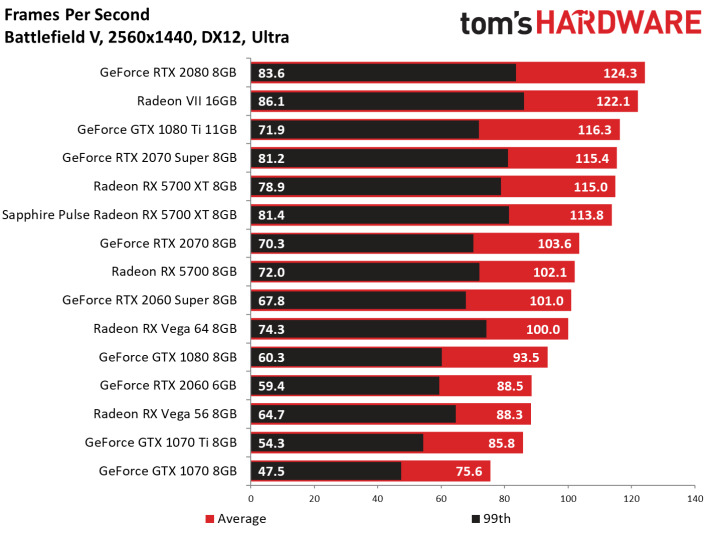
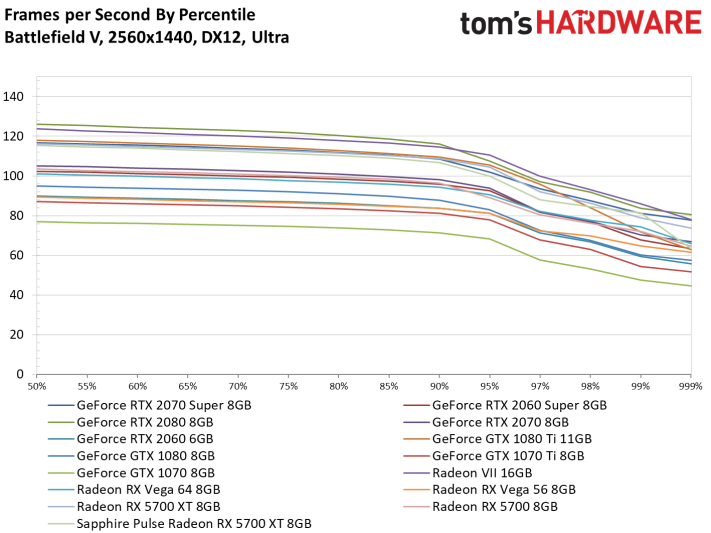





Destiny 2 (DX11)







Far Cry 5 (DX11)
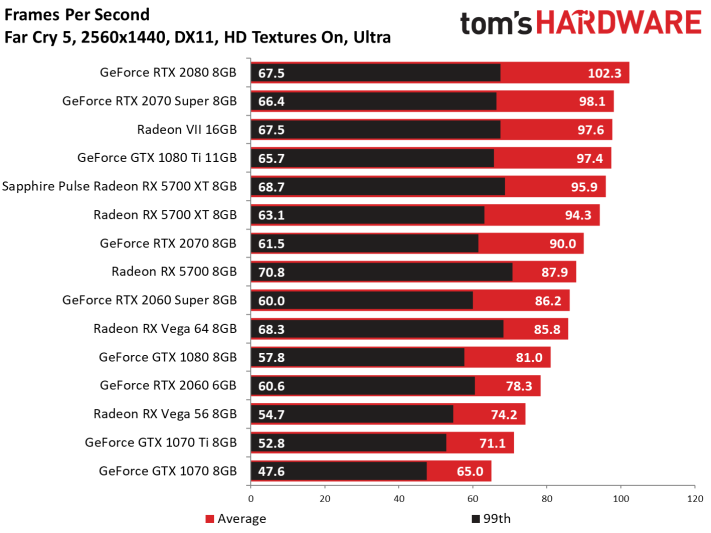





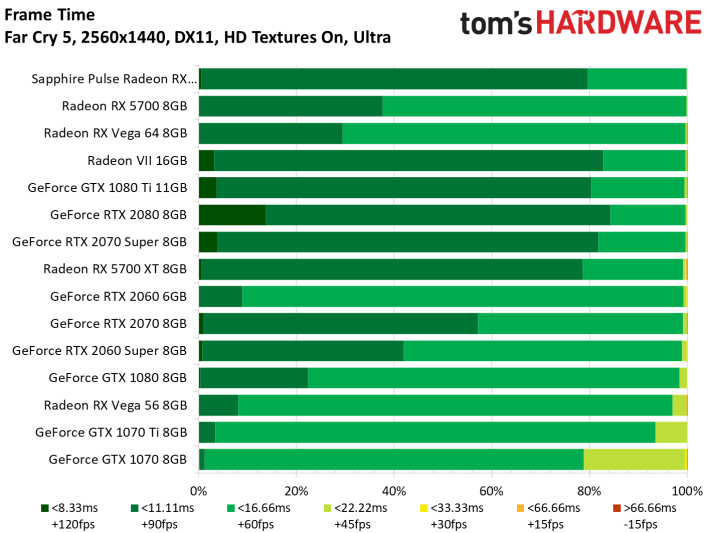
Final Fantasy XV (DX11)



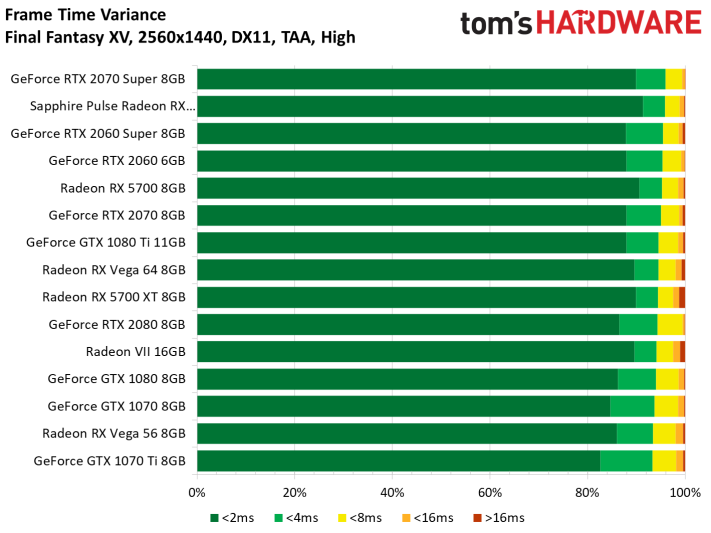



Forza Horizon 4 (DX12)




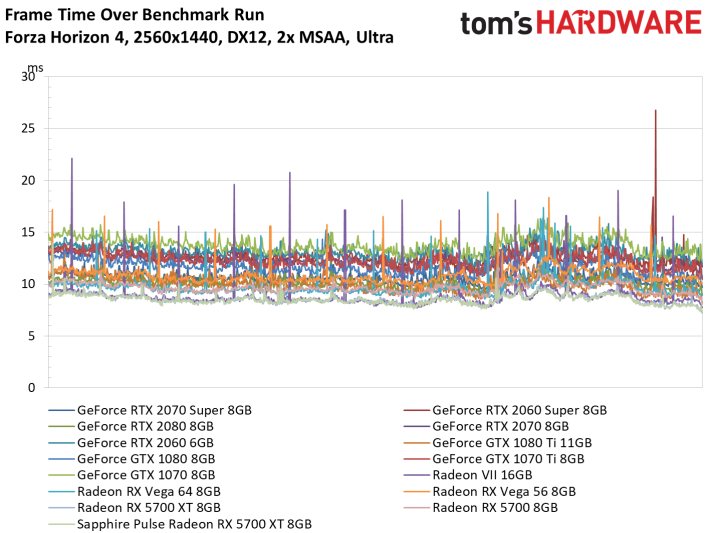

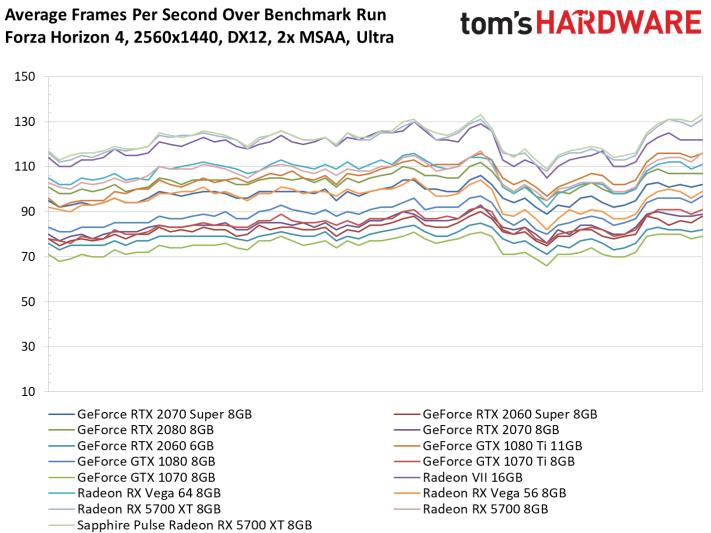
Grand Theft Auto V (DX11)
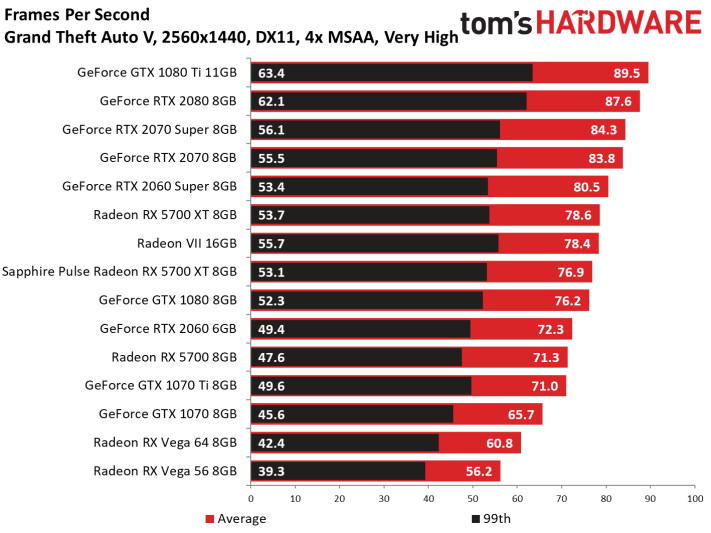






Metro: Exodus (DX12)





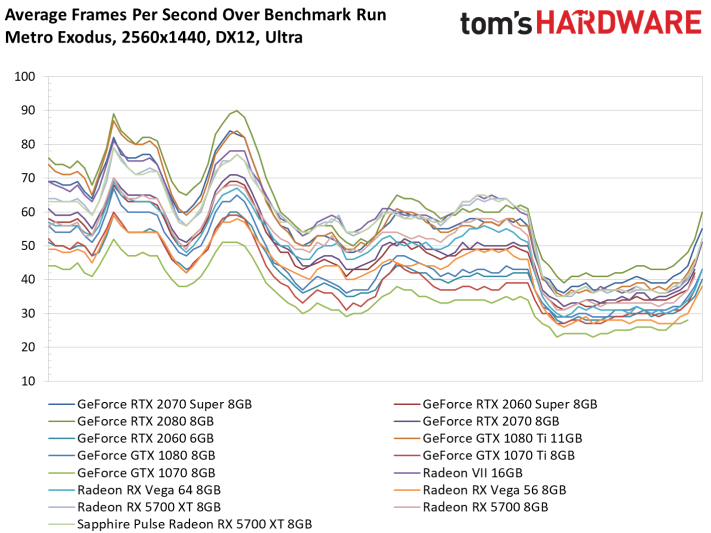

Shadow of the Tomb Raider (DX12)





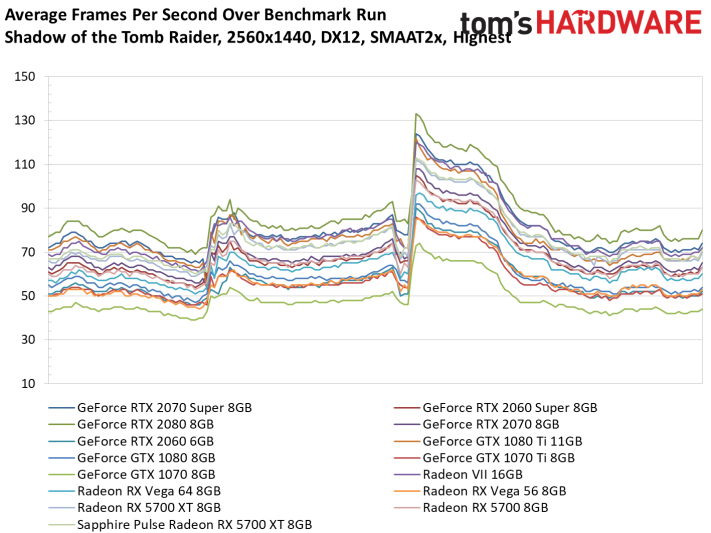

Strange Brigade (Vulkan)







Tom Clancy’s The Division 2 (DX12)

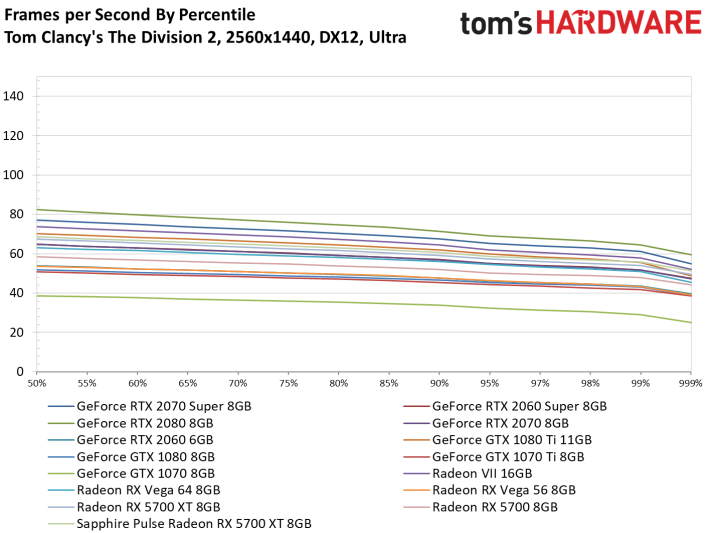
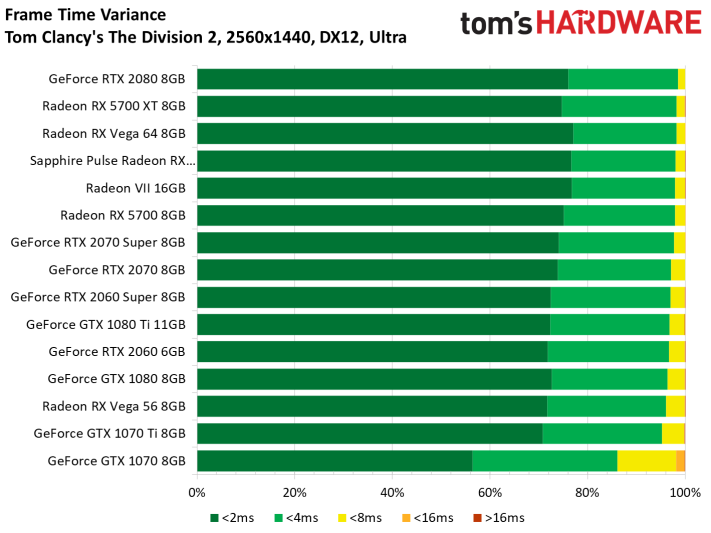




Tom Clancy’s Ghost Recon (DX11)
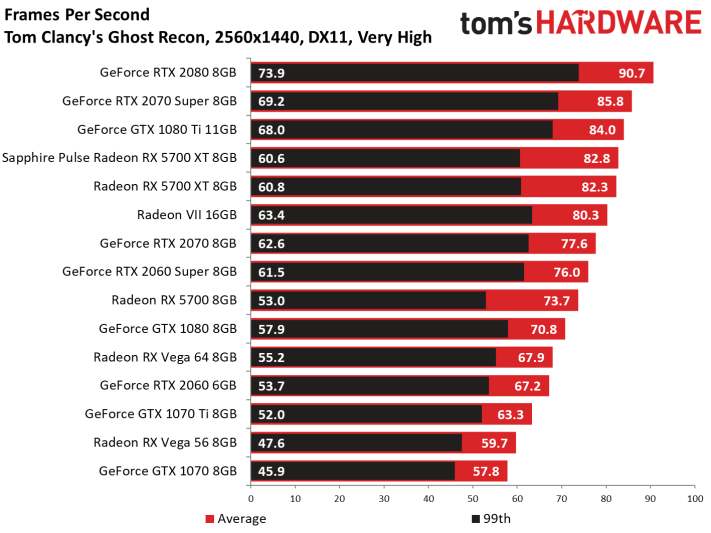



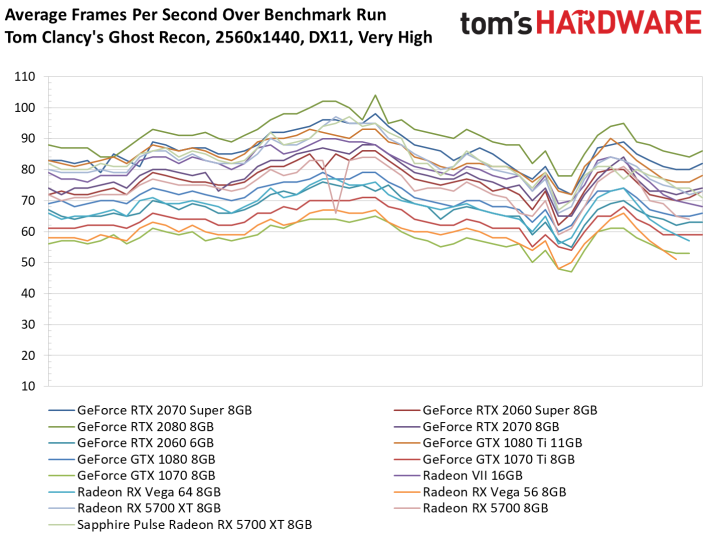


The Witcher 3 (DX11)







Wolfenstein II: The New Colossus (Vulkan)


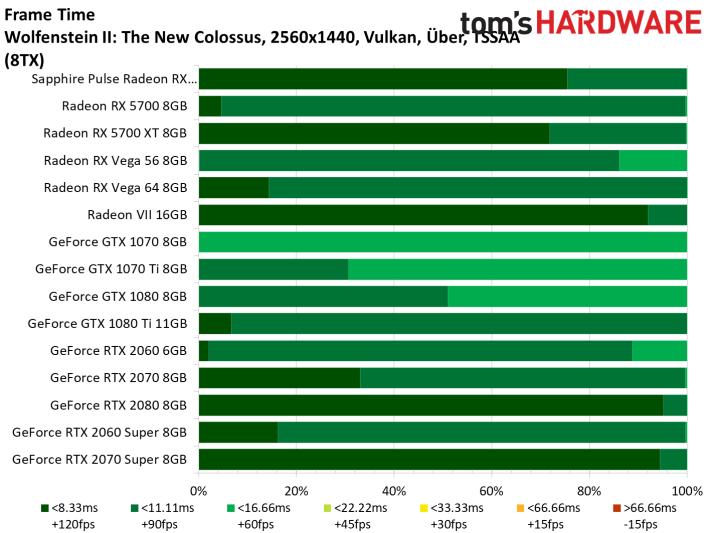




MORE: Best Graphics Cards
MORE: Desktop GPU Performance Hierarchy Table
MORE: All Graphics Content
Get Tom's Hardware's best news and in-depth reviews, straight to your inbox.
Current page: Performance Results: 2560 x 1440
Prev Page Sapphire Pulse Radeon RX 5700 XT Review Next Page Performance Results: 3840 x 2160-
hannibal What was expected. Cooler, quiter version. Interesting to see what other vendors do and what prise.Reply -
Gillerer When employing upscaling+sharpening in games, ideally you don't want to set lower resolution, but use an in-game resolution scale under 100% instead. That way the UI elements and texts will still be rendered at the native monitor resolution and be perfectly crisp - those are where you're likely to first notice any fuzziness.Reply -
2Be_or_Not2Be Hmm... the review keeps on saying this board is "quieter" than the reference version, yet there are no Noise Level tests that show you how quiet it is (or isn't).Reply -
Blytz Ok, so if the pricing for me is generally that the AIB boards at the same price to 5% cheaper than the 2060 supers, for a card that nips at the heels of the 2070 (and sometimes the 2070 super depending on the game) I'd assume this is a no brainer for meReply -
iam2thecrowe Not sure if I'm blind, but I cant see anywhere in the article weather or not you test your gfx cards in a case? or in open air? In my experience this type of cooler can be problematic in some cases, particularly smaller cases.Reply -
AeroWB Chris, thanks for the great review. The amount of information packed in the review is amazing. I really like the inclusion of the Frames per Second by Percentile graphs. Unfortunately the graphs are a little small and the colors are sometimes so close its very hard to see what is what.Reply
Also I want to dare you to change the order of the cards in the graphs based on the 99 percentile values. The 99 percentile scores are more important to determine the experience than the old average FPS measurement.
For power consumption I'd like a graph with the power consumption from Metro with the other cards in the review, now I have to go to multiple reviews to compare.
Futher the review is lacking noise measurements while there are fan RPM, clock rate and temperature measurements. As a user I am more interested in noise than those other 3, as noise I can compare top other cards the other 3 measurements are less interesting and sometimes even incomparable.
In the conclusions you mention that its a good card but though its 10% faster than a GTX2060 Super its higher power consumption and lack of ray tracing make it a hard choice. As a user I am looking at performance per dollar first and performance per watt second, and I think that holds for most user. Now while ray tracing is nice feature it cannot be used in the majority of games and especially in this segment enabling ray tracing is a tough trade off as you probably will see more stuttering (or you will need to lower other graphics settings, can that a be good trade ever?)
So my conclusion would be reversed. The RX5700XT is the default choice in this price and only if you need to limit power consumption (for example if your case has bad cooling) or if you'd really want to do ray tracing the GTX2060 becomes the better option. Also the Sapphire RX5700XT is 10% faster on average over the average FPS of the 13 games. If we look at 99 percentile its 12% faster, again not much but still a good bit. Also the drivers are less matured so you could a expect a little more improvement from that side too.
Its not such an easy the choice as the Ryzen 3000 is compared to the Core i5/7 at this moment where the former is better in almost all aspects, but I think the RX5700XT is the better choice for most gamers shopping around this price. -
King_V Given how, with Sapphire's previous cards, the Pulse was the "good" cooler, and the Nitro/Nitro+ had the "even better" cooler, I'd be curious to see how their Nitro cooling solution does, when they release one for the 5700XT.Reply -
spigias ReplyAeroWB said:Chris, thanks for the great review. The amount of information packed in the review is amazing. I really like the inclusion of the Frames per Second by Percentile graphs. Unfortunately the graphs are a little small and the colors are sometimes so close its very hard to see what is what.
Also I want to dare you to change the order of the cards in the graphs based on the 99 percentile values. The 99 percentile scores are more important to determine the experience than the old average FPS measurement.
For power consumption I'd like a graph with the power consumption from Metro with the other cards in the review, now I have to go to multiple reviews to compare.
Futher the review is lacking noise measurements while there are fan RPM, clock rate and temperature measurements. As a user I am more interested in noise than those other 3, as noise I can compare top other cards the other 3 measurements are less interesting and sometimes even incomparable.
In the conclusions you mention that its a good card but though its 10% faster than a GTX2060 Super its higher power consumption and lack of ray tracing make it a hard choice. As a user I am looking at performance per dollar first and performance per watt second, and I think that holds for most user. Now while ray tracing is nice feature it cannot be used in the majority of games and especially in this segment enabling ray tracing is a tough trade off as you probably will see more stuttering (or you will need to lower other graphics settings, can that a be good trade ever?)
So my conclusion would be reversed. The RX5700XT is the default choice in this price and only if you need to limit power consumption (for example if your case has bad cooling) or if you'd really want to do ray tracing the GTX2060 becomes the better option. Also the Sapphire RX5700XT is 10% faster on average over the average FPS of the 13 games. If we look at 99 percentile its 12% faster, again not much but still a good bit. Also the drivers are less matured so you could a expect a little more improvement from that side too.
Its not such an easy the choice as the Ryzen 3000 is compared to the Core i5/7 at this moment where the former is better in almost all aspects, but I think the RX5700XT is the better choice for most gamers shopping around this price.
Great comment, thank you AeroWB, your conclusion is much better than Chris.(opinions respected of course) . Had to visit other tech sites for a comparisons too. Makes me wonder what happened to this site. -
Minnefornian Did they say when will the TriXX software be available for the Pulse? The current version crashes upon launch for me.Reply
